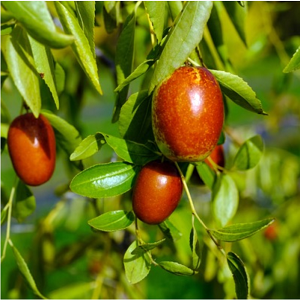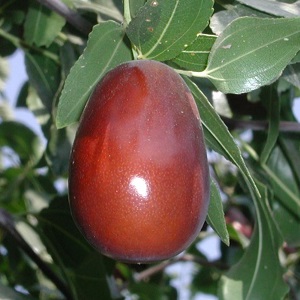Jujube : LI 30-60cm (12-24") 1 gallon pot
$56.95
Not Available in 2025
Another very popular variety. Li is noted for its large (4-5 cm) egg shaped fruit with a very small pit. While Lang should be left on the tree to ripen, Li can be picked when still yellow-green and will ripen to a sweet, date-like flavour. One of the best for fresh eating. Productive tree has an attractive arching branch structure.
Ripens with Lang.
SEMI-FERTILE | ZONE 5/6 | HARVEST: SEPT / OCT.
Limited quantities. Limit one to a customer.
Only logged in customers who have purchased this product may leave a review.
Growing Tips
In most cases, we recommend planting bareroot fruit trees at their permanent site as soon as you get them. However, the trees in this section of the catalogue (Pawpaws, Persimmons and Jujubes) will often benefit from spending a few more years in a pot. Since these species do not take as well to bareroot handling, we receive them as very small trees in pots. We suggest you repot them in a 2 or 3 gallon container and grow them for several seasons. Pawpaws in particular, will appreciate this, as the tender young trees will prosper much more if you can keep them out of direct sunlight. This way you also have the option of overwintering them in your garage until they are bigger and stronger.
See Orchard Supplies for 3 gallon Root Trapper® Containers.




Reviews
There are no reviews yet.